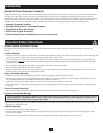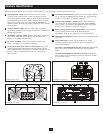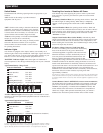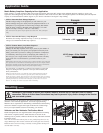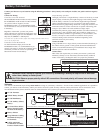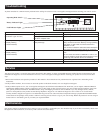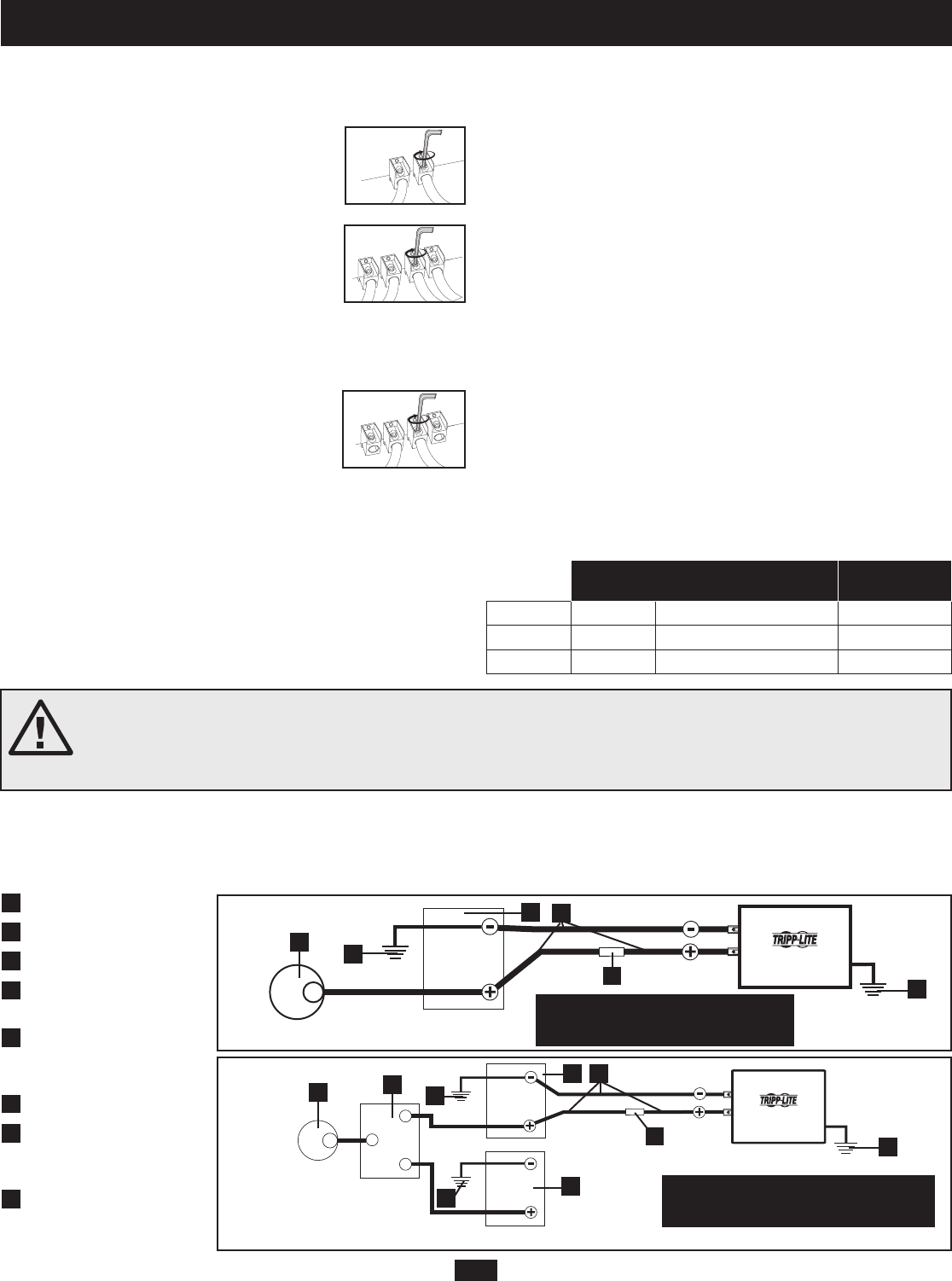
6
Battery Connection
1
12 Volt Alternator
2
Vehicle Battery Ground
3
12 Volt Main Battery
4
12 Volt Auxiliary (House)
Battery
5
UL-Listed Fuses & Fuse
Blocks (mounted within
18 inches of the battery)
6
Battery Isolator
7
Large Diameter Cabling,
Maximum 00 Gauge to
Fit Terminals
8
8 AWG (minimum)
Ground Wire to Vehicle
Frame or Earth Ground
Connect your Inverter to your batteries using the following procedures—always loosely twist each pair of cables (one positive and one negative)
together:
WARNING! Never attempt to operate your Inverter by connecting it directly to output from an alternator
rather than a battery or battery bank.
CAUTION! Observe proper polarity with all DC connections. Reversed polarity will cause internal damage
to your Inverter.
Vehicular
Your Inverter’s Nominal DC Input Voltage must match the voltage of your battery or batteries—12 Volts in most vehicular applications. It is possible to
connect your Inverter to the main battery within your vehicle’s electrical system. In many vehicular contexts, the Inverter will be connected to one or
more dedicated auxiliary (house) batteries which are isolated from the drive system to prevent possible draining of the main battery.
Connect DC Wiring:
Connection to Two DC Terminals
The PV1800GFCI model includes two DC terminals;
the PV3000GFCI model includes four DC terminals
(two positive and two negative). For the
PV3000GFCI model, it is recommended that both
sets of terminals (4 wires) be used for the connection
to the battery.
Regardless of the model, you must run positive
cable(s) through user-supplied UL-listed fuse(s) and
fuse block(s) of the proper size: PV1800GFCI—250
amp fuse, PV3000GFCI—500 amp fuse.
An excellent source of cables are battery jumper cables. Output performance will decrease if
you use only one jumper cable.
Connection to Four DC Terminals
To obtain maximum output power from the
PV3000GFCI model, it is recommended that you
connect your battery to all four DC terminals. In this
connection you must run 4 wires of equal length
between the inverter and the battery.
Length & Gauge of Cables
Although your Inverter is a high-efficiency converter of electricity, its rated
output capacity is limited by the length and gauge of the cabling running
from the battery to the unit. Use the shortest length and largest diameter
cabling (maximum 00 gauge) to fit your Inverter’s DC Input terminals.
Shorter and heavier gauge cabling reduces DC voltage drop and allows for
maximum transfer of current. Your Inverter is capable of delivering peak
wattage at up to 200% of its rated continuous wattage output
instantaneously. Heavier gauge cabling should be used when continuously
operating heavy draw equipment under these conditions. Tighten your
Inverter and battery terminals to approximately 3.5 Newton-meters (2.58
foot lbs.) of torque to create an efficient connection and to prevent
excessive heating at this connection. Insufficient tightening of the
terminals could void your warranty.
Connect Ground:
Using a #8 AWG wire or larger, directly connect the Main Ground Lug to
the vehicle's chassis ground or earth ground. See Feature Identification
section to locate Main Ground Lug. All installations must comply with
national and local codes and ordinances.
Connect Fuse:
NEC article 551 requires that you connect your Inverter’s positive DC
Terminal(s) directly to a UL-listed fuse(s) and fuse block(s) within 18
inches of the battery. See diagrams below for proper fuse placement.
Max Distance From Battery to Unit (ft.)
Recommended
DC Fuse
AWG 0 00
1800W 17 22 250A
3000W 21 26 500A
PV3000GFCI
PV1800GFCI
PV3000GFCI
12 Volt Inverter
12 Volts
12 Volts
12 Volt Main Battery Connection—two DC terminals
12 Volt Inverter
12 Volts
12 Volts
12 Volts
12 Volt Main and Auxiliary (House) Battery Connection (Isolated Parallel)—two DC terminals
Note: Connection to all four DC terminals
is recommended to provide the maximum
output power from PV3000GFCI models.
Note: Connection to all four DC terminals
is recommended to provide the maximum
output power from PV3000GFCI models.
1
1
2
2
2
3
3
4
5
5
6
7
7
8
8




